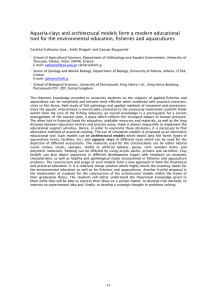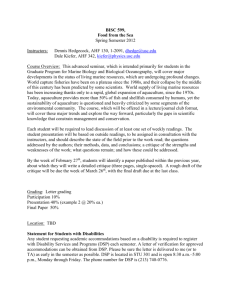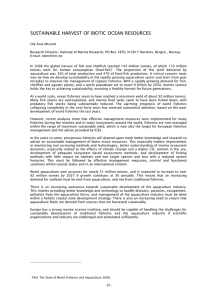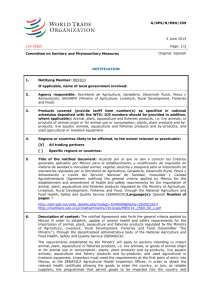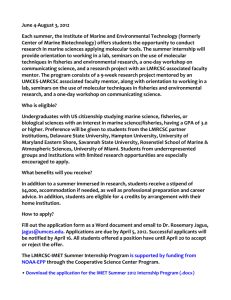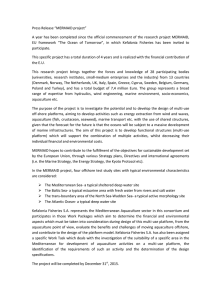Future Trends Series - GR:EEN Project
advertisement
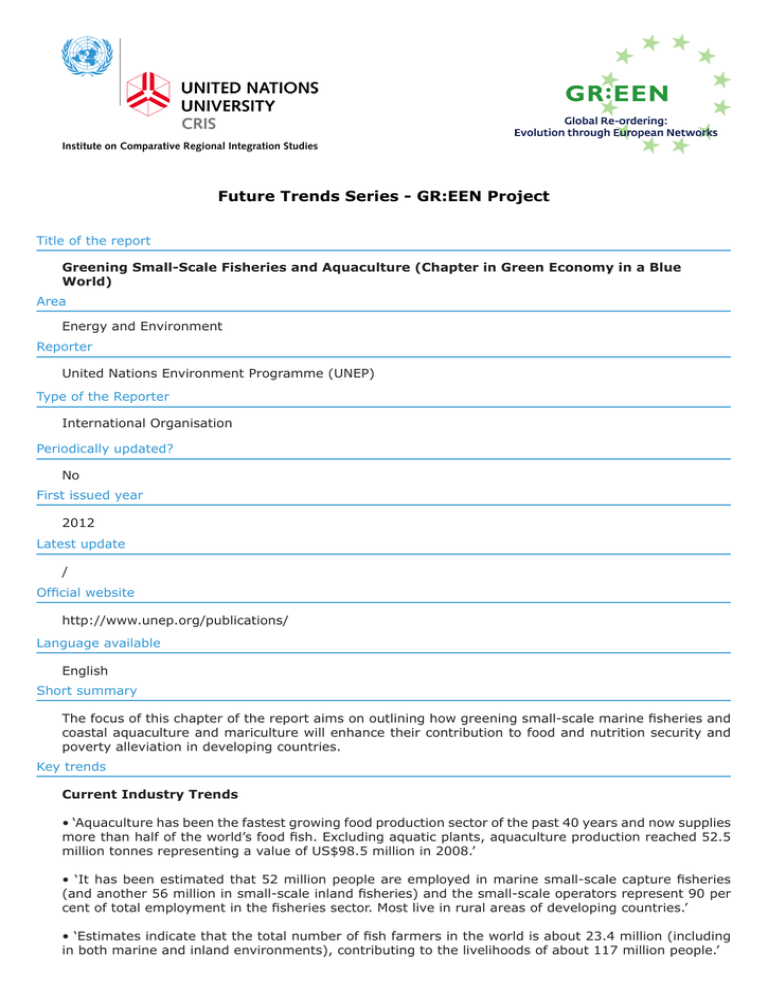
Future Trends Series - GR:EEN Project Title of the report Greening Small-Scale Fisheries and Aquaculture (Chapter in Green Economy in a Blue World) Area Energy and Environment Reporter United Nations Environment Programme (UNEP) Type of the Reporter International Organisation Periodically updated? No First issued year 2012 Latest update / Official website http://www.unep.org/publications/ Language available English Short summary The focus of this chapter of the report aims on outlining how greening small-scale marine fisheries and coastal aquaculture and mariculture will enhance their contribution to food and nutrition security and poverty alleviation in developing countries. Key trends Current Industry Trends • ‘Aquaculture has been the fastest growing food production sector of the past 40 years and now supplies more than half of the world’s food fish. Excluding aquatic plants, aquaculture production reached 52.5 million tonnes representing a value of US$98.5 million in 2008.’ • ‘It has been estimated that 52 million people are employed in marine small-scale capture fisheries (and another 56 million in small-scale inland fisheries) and the small-scale operators represent 90 per cent of total employment in the fisheries sector. Most live in rural areas of developing countries.’ • ‘Estimates indicate that the total number of fish farmers in the world is about 23.4 million (including in both marine and inland environments), contributing to the livelihoods of about 117 million people.’ • ‘Altogether, around 180 million people are directly involved in fisheries and aquaculture activities globally, including catching, growing, processing and trading aquatic products. These fishers, fish farmers and fish workers sustain, in turn, about 0.5 billion people, equivalent to over 8 per cent of the global population.’ Future Trend Opportunities • ‘Investment to reduce fossil energy use and thus the already low carbon footprint of fisheries and aquaculture has potential gains in terms of improved economic performance and in contributing to climate change mitigation.’ • ‘The needed reductions in fishing capacity and effort in capture fisheries along with the adoption of green technologies can drastically lower fuel consumption and GHG emissions while greatly enhancing the fisheries sector’s contribution to economic growth, food and nutrition security and poverty reduction.’ • ‘Well-managed coastal aquaculture and mariculture offer significant scope for green growth and employment opportunities for coastal communities at low levels of CO2 emissions when compared to other protein production systems.’ • ‘Supporting development and investment in green technology and raising industry and consumer awareness on the sustainability of fisheries and aquaculture are key approaches to behavioural change and transition to green growth in fisheries and aquaculture.’ • ‘Green technologies include: low impact, fuel-efficient fishing methods; innovative aquaculture production systems using environmentally friendly feeds; reduced energy use and greener refrigeration technologies; and improved waste management in fish handling, processing and transportation.’ Suggestions • Ensure that fish are harvested, grown and traded with efficient and sustainable use of natural resources, energy, capital and labour • Ensure that the economic benefits from fisheries and aquaculture are equitably distributed and socially beneficial • Reduce the carbon footprint of the fishery and aquaculture sectors (including production, processing and trade) and pursue opportunities to use coastal and marine ecosystems as carbon sinks Methodology Research from primary and secondary sources Reference to other trends reports? If yes, which reports? /
